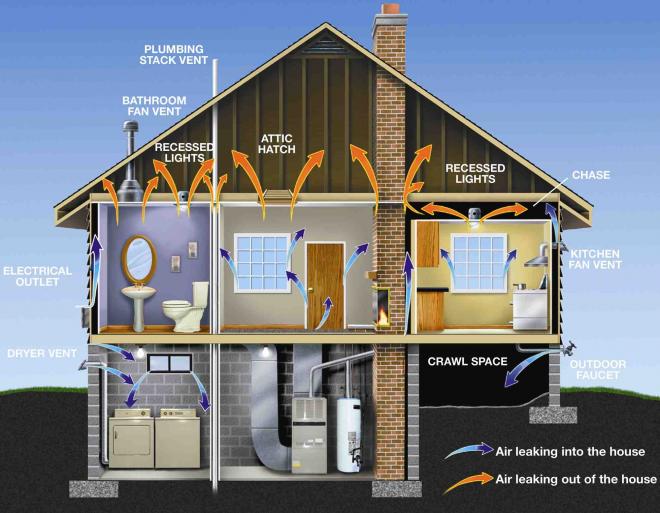
What’s the Real Problem?
Certain problems and products in the home have been linked to; asthma, allergies, Eye/nose/ throat irritation, headaches, nausea, nervous system damage, cancer and even death.
Those that can do harm quickly are:
High levels of carbon monoxide
Lead in paint
Materials off-gassing certain toxins
Dust mites
Mold
Pests
Those that can harm more slowly are:
Low levels of carbon monoxide
Radon
Materials off-gassing certain toxins
Stored chemicals and solvents
Solving the Problem
Science has made great strides in understanding home health issues and providing options to help. There are many steps you can take to identify and eliminate problems before they make you sick. Here are some suggestions:
1. More than 30% of Minnesota homes have radon levels that are too high. Use a low cost, short-term radon test kit to check your home. Getting rid of radon is a great start to preventing lung cancer.
2. If your home was built before 1978 and has painted surfaces purchase a lead test kit. This is especially important if you are planning any remodeling that disrupts painted windows, trim, doors, railings, porches, and siding. Inhaled, or ingested lead can disrupt brain and nervous system development in infants and children.
3. Install easy-to-clean hard surface flooring (wood, tile, laminate, linoleum) to discourage dust mites that can trigger allergy and asthma attacks.
4. Declutter closets, cabinets, basements, attics, and garages to eliminate places where bugs and rodents can hide and breed.
5. Many home décor products contain noxious substances that out-gas into your home. They can cause many of the health issues listed above. Look for the following labels to ensure the product meets strict air quality standards:
GREENGUARD
Cradle to Cradle
CARB (low formaldehyde wood-based products)
FloorScore (for vinyl and linoleum)
Green Label Plus (carpet)
6. Moisture in the home can lead to mold and mildew which in turn can cause serious health problems. For a dry home:
Install gutters and downspouts and clean them frequently.
Be sure the ground around your home slopes away from the foundation.
Use a dehumidifier in the basement spring through fall.
Look for water or stains around sinks and toilets, on basement walls/floors, near windows and ceilings. Hire a plumber or roofer if the cause of the water leak is obvious.
7. Ventilation for your home.
Install whole house ventilation
Install and use source point ventilation in kitchens and bathrooms
8. Contact a Certified Energy Professional if you have questions and concerns about the health of your home. Yes, an Energy Pro does ‘energy audits’ for comfort and cost savings. But she also uses science and testing to diagnose problems with water/humidity/mold/mildew, pests, carbon monoxide, radon, exhaust and ventilation. The best part? She actually makes house calls!
Next steps
Test for radon and/or lead
Make smart decorating decisions
Identify water problems and design for a dry home.
Hire a plumber or roofer for obvious water leaks.
Locate a certified energy professional to diagnose tough-to-solve problems and to test for dangerous gases like carbon monoxide
Get Started
Contact a building performance specialist today. Enter your name, project details, or any questions you have below.

